#Prototype Software Development
Explore tagged Tumblr posts
Text

Smarter Projects Start with Prototype Software Development
Get ahead with Prototype Software Development. Our Software Development Prototype Model accelerates innovation and minimizes development risks.
#Prototype Software Development#Software Prototype Development#Software Prototyping Model#Software Prototyping Process#Software Development Prototype Model
0 notes
Text
10x Faster App Development - Rapid Prototyping with Low-Code
Achieve 10x faster app development with low-code platforms. Streamline rapid prototyping, reduce complexity, and bring your product to market more efficiently.
0 notes
Text

Do you need a website?
just CLICK HERE and build your own website by your choice.
https://go.fiverr.com/visit/?bta=1026601&brand=fiverrmarketplace&landingPage=https%253A%252F%252Fwww.fiverr.com%252Fs%252FKe716Q4
#Website Design#Web Development#Responsive Web Design#UI/UX Design#Web Design Trends#Custom Web Design#Web Development Services#Front-End Development#Back-End Development#Full-Stack Development#WordPress Design#E-commerce Web Design#Website Redesign#Mobile Web Design#Web Design Inspiration#Website Optimization#SEO Web Design#Web Design Best Practices#Website User Experience#Web Design Principles#Graphic Design for Websites#Website Development Tools#Content Management Systems#Website Speed Optimization#HTML/CSS Design#JavaScript Development#Website Accessibility#Interactive Web Design#Website Prototyping#Web Design Software
0 notes
Text
Advanced Solutions for Software Prototype Development
Explore expert services in creating bespoke software prototypes, delivering tailored solutions that align with client specifications and accelerate product development cycles with precision and agility.
#IT Consulting & IT Services#Best IT Solutions for Your Business#IT Consulting & Services#Cloud migration services#Software Prototype Development
1 note
·
View note
Text
youtube
NXP: FRDM Development Boards for Rapid Prototyping
https://www.futureelectronics.com/resources/featured-products/nxp-mcx-n-mcx-a-microcontrollers . FRDM development boards are a low-cost, scalable hardware platform supported by the MCUXpresso Developer Experience. Designed to promote creative freedom while developing for various end applications. https://youtu.be/YpHF9rL0oRQ
#Nxp#frdm#development board#rapid prototyping#software engineering#microcontroller firmware#microcontroller#FRDM#development boards#How to#future electronics#Youtube
1 note
·
View note
Text
youtube
NXP: FRDM Development Boards for Rapid Prototyping
https://www.futureelectronics.com/resources/featured-products/nxp-mcx-n-mcx-a-microcontrollers . FRDM development boards are a low-cost, scalable hardware platform supported by the MCUXpresso Developer Experience. Designed to promote creative freedom while developing for various end applications. https://youtu.be/YpHF9rL0oRQ
#Nxp#frdm#development board#rapid prototyping#software engineering#microcontroller firmware#microcontroller#FRDM#development boards#How to#future electronics#Youtube
0 notes
Text
0 notes
Text
Top 10 Website Design Tools
In the rapidly evolving landscape of digital design, staying ahead of the curve is essential for creating stunning websites. As we step into 2024, the world of website design has seen a surge in innovative tools that streamline the creation process and elevate the overall user experience. Here, we present the top 10 website design tools that are revolutionizing the industry in 2024. Top 10…

View On WordPress
#best web design software#collaborative design platforms#creative web design tools#digital design software#graphic design software#online web design tools#responsive web design tools#top design software for websites#ui/ux design tools#user interface design tools#web design resources#web design tools and software#website design tools 2024#website development tools#website prototyping tools
1 note
·
View note
Text
Testimonial
Sdreatech has completed several global websites, mobile apps, IoT applications, IoT games, and custom software projects for various corporate needs.
We also design and develop UI/UX, prototypes, UI kits, HTML, and WordPress themes.
Here are Significant statements from our clients. Click on the link👇👇
https://www.sdreatech.com/
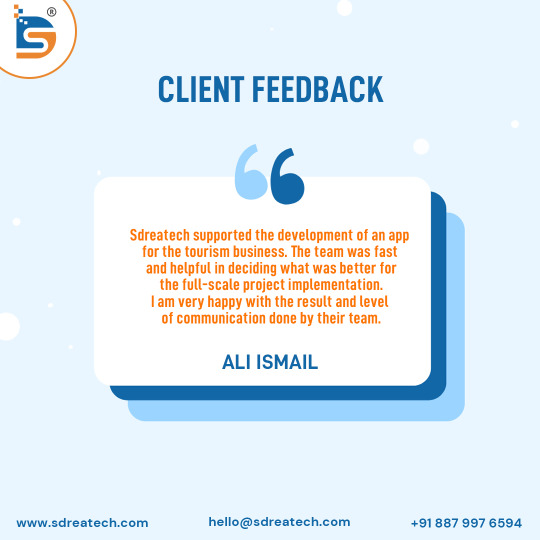
#Sdreatech has completed several global websites#mobile apps#IoT applications#IoT games#and custom software projects for various corporate needs.#We also design and develop UI/UX#prototypes#UI kits#HTML#and WordPress themes.#https://www.sdreatech.com/#testimonial#testimonialcustomer#testimonials#TestimonialTime#clientreview#feedback#clientfeedback#clienttestimonials#technology#itcompany#itcompanyindia#sdreatech
0 notes
Text
UI/UX in Web Development Process
Crafting Seamless #digitalexperiences: The Intersection of #ui and #ux in #webdevelopment. In the ever-evolving world of web development, the harmonious blend of #userinterface (UI) and #userexperience (UX) holds the key to unlocking user #engagement and #satisfaction.
With UI's #artistic finesse, #websites come to life through #intuitive#layouts, compelling #visuals, and #userfriendly elements that beckon exploration. Meanwhile, UX's empathetic touch orchestrates seamless #interactions, elevating user journeys with #clarity, #simplicity, and #accessibility.
This #dynamic duo collaborates through meticulous #research, #prototyping, and #iterative#design, ensuring the delivery of immersive, purposeful, and captivating web experiences. Together, they unite #aesthetics and #functionality, forging a path toward #digitalsuccess.
#business#software#uiuxdesign#webdesign#webdevelopment#uiux#designer#design#innovative#creative#trending#creativity#technology#future#softwaredesign#webappdesign#webapplications#development#webdesigning#prototype#insipiration#inspiring#designengineers#designcommunity#designanddevelopment#marketing
0 notes
Text

At my last job, we sold lots of hobbyist electronics stuff, including microcontrollers.
This turned out to be a little more complicated than selling, like, light bulbs. Oh how I yearned for the simplicity of a product you could plug in and have work.
Background: A microcontroller is the smallest useful computer. An ATtiny10 has a kilobyte of program memory. If you buy a thousand at a time, they cost 44 cents each.

As you'd imagine, the smallest computer has not great specs. The RAM is 32 bytes. Not gigabytes, not megabytes, not kilobytes. Individual bytes. Microcontrollers have the absolute minimum amount of hardware needed to accomplish their task, and nothing more.
This includes programming the thing. Any given MCU is programmed once, at the start of its life, and then spends the next 30 years blinking an LED on a refrigerator. Since they aren’t meant to be reflashed in the field, and modern PCs no longer expose the fast, bit-bangable ports hobbyists once used, MCUs usually need a third-party programming tool.
But you could just use that tool to install a bootloader, which then listens for a magic number on the serial bus. Then you can reprogram the chip as many times as you want without the expensive programming hardware.
There is an immediate bifurcation here. Only hobbyists will use the bootloader version. With 1024 bytes of program memory, there is, even more than usual, nothing to spare.

Consumer electronics development is a funny gig. It, more than many other businesses, requires you to be good at everything. A startup making the next Furby requires a rare omniexpertise. Your company has to write software, design hardware, create a production plan, craft a marketing scheme, and still do the boring logistics tasks of putting products in boxes and mailing them out. If you want to turn a profit, you do this the absolute minimum number of people. Ideally, one.
Proving out a brand new product requires cutting corners. You make the prototype using off the shelf hobbyist electronics. You make the next ten units with the same stuff, because there's no point in rewriting the entire codebase just for low rate initial production. You use the legacy code for the next thousand units because you're desperately busy putting out a hundred fires and hiring dozens of people to handle the tsunami of new customers. For the next ten thousand customers...

Rather by accident, my former employer found itself fulfilling the needs of the missing middle. We were an official distributor of PICAXE chips for North America. Our target market was schools, but as a sideline, we sold individual PICAXE chips, which were literally PIC chips flashed with a bootloader and a BASIC interpreter at a 200% markup. As a gag, we offered volume discounts on the chips up to a thousand units. Shortly after, we found ourselves filling multi-thousand unit orders.
We had blundered into a market niche too stupid for anyone else to fill. Our customers were tiny companies who sold prototypes hacked together from dev boards. And every time I cashed a ten thousand dollar check from these guys, I was consumed with guilt. We were selling to willing buyers at the current fair market price, but they shouldn't have been buying these products at all! Since they were using bootloaders, they had to hand program each chip individually, all while PIC would sell you programmed chips at the volume we were selling them for just ten cents extra per unit! We shouldn't have been involved at all!
But they were stuck. Translating a program from the soft and cuddly memory-managed education-oriented languages to the hardcore embedded byte counting low level languages was a rather esoteric skill. If everyone in-house is just barely keeping their heads above water responding to customer emails, and there's no budget to spend $50,000 on a consultant to rewrite your program, what do you do? Well, you keep buying hobbyist chips, that's what you do.
And I talked to these guys. All the time! They were real, functional, profitable businesses, who were giving thousands of dollars to us for no real reason. And the worst thing. The worst thing was... they didn't really care? Once every few months they would talk to their chip guy, who would make vague noises about "bootloaders" and "programming services", while they were busy solving actual problems. (How to more accurately detect deer using a trail camera with 44 cents of onboard compute) What I considered the scandal of the century was barely even perceived by my customers.
In the end my employer was killed by the pandemic, and my customers seamlessly switched to buying overpriced chips straight from the source. The end! No moral.
360 notes
·
View notes
Text
Rapid Prototyping and Launch with Low-Code Development [Case Study]

There is arguably hardly any one factor, in an era of rapid technological change, that can make a product the center of buzz as much as the need for speed.
Those firms work under the constant pressure of fast innovation and making up for the market need in ideas that have to be actualized at very fast speeds. This is where rapid prototyping fits in; it allows teams to churn out early prototypes of actual products quickly, allowing rapid iterations, tests, and improvements made against real user insight.
However, traditional development methods often require a lifeline to keep pace with the demands for speed and rapid turnaround, especially when considering custom app development. That's where low-code development becomes a game-changer: designed to enable a team to build and deliver an application at speed, a low-code platform gives pre-designed components and visual interfaces that curb the need to write long lines of code.
For businesses that offer custom app development services, the use of Low Code in their process leads to much more rapid prototyping and launching, which goes a long way in how they can remain competitive and deliver effectively for their clients.
Case Study
Client/Project
HipMeal is an innovative app developed for a Swiss nonprofit organization with a mission to connect individuals who have surplus food with those in need. It provides features for building a community over shared meals towards waste reduction and ensuring that good food does not go to waste. Some of the basics within this app were user-friendly multi-language and secured, which are of course extremely essential, with user profiles, geolocation, and extended food listings.

Problems Associated with Traditional Development Approaches
The development approach also mainly involves extensive coding and complex infrastructure setup that would seriously impede the process of implementing the project in relatively short timelines.
Delivering a complex, feature-rich, cross-platform HipMeal would have been a highly problematic task with the traditional development approach. Since the deadlines were extremely tight and with a limited resource capability, it was a concern to meet the purposes of the client quickly and cost-effectively.
Rapid Prototyping and Low-Code Development
These challenges were tackled by embracing rapid prototyping through low-code development. With Flutter, a high-performing cross-platform app development framework, the team built a working prototype in a fraction of the time investment of other approaches to development.
The developed prototype included basic functionalities like user profiles, geolocation, and food listing, enabling stakeholders to visualize and experience the application early in the development process.
They have gone ahead to choose a serverless architecture for even more speed in development and, at the same time, can completely dispense with a lot of backend infrastructure. This not only reduced the initial costs of hosting but also facilitated quick iterations in light of user demands.
The low-code approach got the team quickly refining the application, with fear assured of meeting their client's needs on a very tight project timeline. The above mixture of rapid prototyping and low-code development helped to complete application development in time with high quality.
Why Low-Code Development?
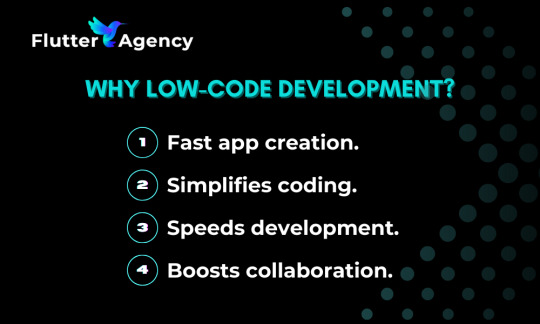
Introduction to Low-Code Development
Low-code development is a visual approach to software creation that enables users to create applications with minimum coding effort. The traditional way of mastering coding meant that one had to have extensive programming skills. Low-code platforms have intuitive user interfaces with drag-and-drop components that reduce the time of app development and, at the same time, dramatically cut complexity.
There are many benefits to be derived from using low-code platforms for rapid prototyping and launching: Apart from shortening the development cycle, facilities are provided for the time being so that a great many ideas can be cycled and built out according to user feedback, which low-code platforms can make very easy. They make all contributions to the project easy for all stakeholders—technical and nontechnical—so that businesses speed their way to the market, gaining an edge over competition in industries where agility is key.
Decision Process
Low-code development was decided upon as the most practical solution for the HipMeal project. It was guided by some of the following principal variables:
Ease of Use: The low-code platforms are designed in a user-friendly manner, and therefore both the developer and designer collaborate effectively. In HipMeal's case, this ease of use was very paramount because it had to collaborate with several stakeholders for the community-driven app.
Speed: With a tight project timeline, low-code development got the doors open to quickly prototype and launch the application. Using Flutter for cross-platform development gave the assurance that the app could be used across many devices, without the need for intensive reworking, fitting perfectly within the client's requirements.
Cost-effectiveness: This was a reduction in intensive resources for coding on the project because coding is usually a very expensive part of the custom app development services. It saved not only money on development but also reduced the initial hosting expenses through a serverless architecture.
The development strategy of today's top mobile app development firms is to deliver quality products in minimal time with the best resource utilization in a highly competitive technological landscape.
The Rapid Prototyping Stage
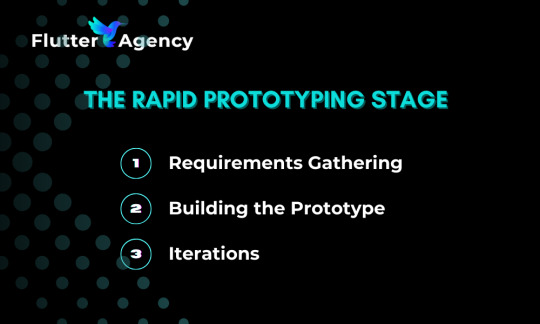
Step 1: Requirements Gathering
The first proper step in the development process is understanding the needs and setting clear goals for the client. At this step, top mobile app development firms that provide custom app development services need to better understand the client's requirements.
In the planning stage of the HipMeal project, there was close cooperation with the client so that such fundamental features as user profiles, geolocation, and food listings could be identified. This was to ensure that the end product developed was to be a friendly, multilingual, and secure digital space.
Low-code tooling meant that these concepts might quickly be visualized to turn the abstract requirements into touchable, interactive models. This immediate visualization helped to align the vision of the project between developers and stakeholders, thus ensuring that everyone was on board from the very start.
Step 2: Building the Prototype
With the crystallization of requirements, the team carried on to quickly develop the prototype. The team speedily assembled key features needed in the app using a low-code platform like OutSystems. The visual, drag-and-drop interface of low-code allowed quicker development, which enabled the team to build a working prototype in just weeks—versus what would have been months with the traditional methods of development.
It allowed the team to concentrate on user experience and design elements more so than getting bogged down in the backend complexities, which is the usual way things go. This hyperactive timeline bore fruit regarding HipMeal, whereby the team was able to test and evolve the application much earlier than they had planned.
Step 3: Iterations
With a prototype, the next thing was to do feedback on stakeholders and probable users. The low-code platform facilitated ease of effecting changes in redesigning the prototype iteratively based on the feedback obtained. Improvements in the user interface, upgrades of features, and bug fixes were all performed quickly, evolving in the way a user would expect the app.
The product was subject to continuous improvement since it was easy to make updates in a low-code environment. Each cycle drive could provide better functionality and user satisfaction.
Launch of the Product
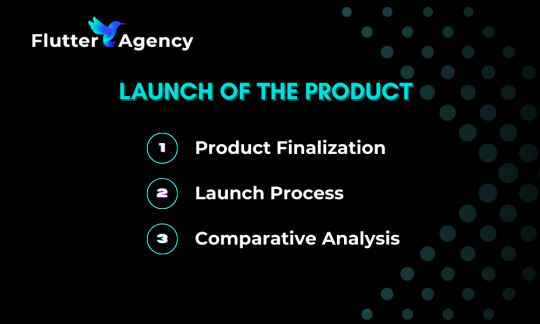
Product Finalization
The process then switched to the working prototype when the prototype had been defined into converted into an end product. Most projects face difficulty with this transition from the prototype to a live product, but with the assistance of the low-code platform, this was dramatically reduced. The issues the team encountered were underperformance and scaling issues of the app, but these were defeated by the optimization of the serverless architecture and robust making of the data handling.
Launch Process
Fast development due to low code took place for the HipMeal app, hence well through the projected timescale. The phased deployment strategy the team adopted involved an initial launch in selected locations before rolling out nationwide, thus presenting control over the rollout and reducing risk in the event of the launch.
Personalization was assured with strategic deployment and deadlines for app development and completion through the low-code development approach. This has in turn availed a timely and effective solution to the client.
The contribution of rapid prototyping and low-code development was quite time- and cost-effective: compared with similar projects that followed the traditional development method, the HipMeal app was developed almost half the time, and the development cost was reduced to a significant extent. The metrics in terms of user satisfaction also showed a considerable rate of engagement, proving the efficiency of the user-centered design process.
Comparative Analysis
It becomes evident in terms of the benefits of HipMeal if compared with projects that are not developed using low code. Traditional coded projects are most often spread across periods and expenses as it takes to develop effectively. As of the study, it has been concluded that the platforms developed using low code are not just necessary but the imprimatur of top mobile app development firms seen to deliver custom application development services at a time and expense savings.
Best Practices
Here are some of the main lessons from this project—involve the stakeholder early and often, use the feedback loops that are enabled by the low-code platform, and make sure that the chosen low-code platform can carry the final scale and complexity of the product to be delivered to ensure this rollout is successful.
Summary of the Case Study
One example by which this low-code development capability enables the leading custom mobile application development firms to quickly and cost-effectively introduce advanced services to the market is the HipMeal project.
The low code allowed the team to rapidly prototype and iterate countless times and ultimately deliver a scalable, user-friendly app according to the requirements and much more, if not more. This case study we are sharing highlights the growing importance of low-code platforms in a modern development landscape.
0 notes
Text
MAJOR HOTEL MARIO UPDATE REGARDING IGGY'S HOTEL
Skeem on the Seedy Eye Software Discord server has found a December 2021 Instagram post by Hotel Mario artist Trici Venola, containing several backgrounds for Ludwig and Lemmy's hotels:

More importantly, the fifth picture contains a background for a water-themed hotel that was NOT present in the final game OR in the prototype:

Given what we know about the development of Hotel Mario, this is almost certainly Iggy's cut hotel. (It also confirms that the cheese hotel idea was completely scrapped after Trici was hired for the game.)
#not corruption#hotel mario#funny thing is that i wondered if iggy's hotel was water-themed before this discovery#now i know LOL#super mario bros
174 notes
·
View notes
Text
Noosciocircus agent backgrounds, former jobs at C&A, assigned roles, and current internal status.
Kinger
Former professor — Studied child psychology and computer science, moved into neobotanics via germination theory and seedlet development.
Seedlet trainer — Socialized and educated newly germinated seedlets to suit their future assignments. I.e. worked alongside a small team to serve as seedlets’ social parents, K-12 instructors, and upper-education mentors in rapid succession (about a year).
Intermediary — Inserted to assist cooperation and understanding of Caine.
Partially mentally mulekicked — Lives in state of forgetfulness after abstraction of spouse, is prone to reliving past from prior to event.
Ragatha
Former EMT — Worked in a rural community.
Semiohazard medic — Underwent training to treat and assess mulekick victims and to administer care in the presence of semiohazards.
Nootic health supervisor— Inserted to provide nootic endurance training, treat psychological mulekick, and maintain morale.
Obsessive-compulsive — Receives new agents and struggles to maintain morale among team and herself due to low trust in her honesty.
Jax
Former programmer — Gained experience when acquired out of university by a large software company.
Scioner — Developed virtual interfaces for seedlets to operate machinery with.
Circus surveyor — Inserted to assess and map nature of circus simulation, potentially finding avenues of escape.
Anomic — Detached from morals and social stake. Uncooperative and gleefully combative.
Gangle
Former navy sailor — Performed clerical work as a yeoman, served in one of the first semiotically-armed submarines.
Personnel manager — Recordkept C&A researcher employments and managed mess hall.
Task coordinator — Inserted to organize team effort towards escape.
Reclused — Abandoned task and lives in quiet, depressive state.
Zooble
No formal background — Onboarded out of secondary school for certification by C&A as part of a youth outreach initiative.
Mule trainer — Physically handled mules, living semiohazard conveyors for tactical use.
Semiohazard specialist — Inserted to identify, evaluate, and attempt to disarm semiotic tripwires.
Debilitated and self-isolating — Suffers chronic vertigo from randomly pulled avatar. Struggles to participate in adventures at risk of episode.
Pomni
Former accountant — Worked for a chemical research firm before completing her accreditation to become a biochemist.
Collochemist — Performed mesh checkups and oversaw industrial hormone synthesis.
Field researcher — Inserted to collect data from fellows and organize reports for indeterminate recovery. Versed in scientific conduct.
In shock — Currently acclimating to new condition. Fresh and overwhelming preoccupation with escape.
Caine
Neglected — Due to project deadline tightening, Caine’s socialization was expedited in favor of lessons pertinent to his practical purpose. Emerged a well-meaning but awkward and insecure individual unprepared for noosciocircus entrapment.
Prototype — Germinated as an experimental mustard, or semiotic filter seedlet, capable of subconsciously assembling semiohazards and detonating them in controlled conditions.
Nooscioarchitect — Constructs spaces and nonsophont AI for the agents to occupy and interact with using his asset library and computation power. Organizes adventures to mentally stimulate the agents, unknowingly lacing them with hazards.
Helpless — After semiohazard overexposure, an agent’s attachment to their avatar dissolves and their blackroom exposes, a process called abstraction. These open holes in the noosciocircus simulation spill potentially hazardous memories and emotion from the abstracted agent’s mind. Caine stores them in the cellar, a stimulus-free and infoproofed zone that calms the abstracted and nullifies emitted hazards. He genuinely cares about the inserted, but after only being able to do damage control for a continually deteriorating situation, the weight of his failure is beginning to weigh on him in a way he did not get to learn how to express.
#the amazing digital circus#noosciocircus#char speaks#digital circus#tadc Kinger#tadc Ragatha#tadc Jax#tadc gangle#tadc zooble#tadc Pomni#tadc caine#bad ending#sophont ai
231 notes
·
View notes
Text
Aster™ Assistant Software update (05.09.2025)
[ Video demonstrating the Side Panel (used by Vega) shows up next to Aster (Rigel fronting) even after being moved ]
Long story short: overhaul of how the side panel follows Aster around.
Also be mindful as the update may shift the position of speech balloons! You can reset balloon positions with Ctrl+Shift+F10 or via utilities in right click menu.
A minor change for the users, but a pretty massive change on the internal side of things. I have some things to say about it, there's a tech ramble under cut.
The update is currently available in the initial .nar pack download and via Network Update in the right click menu!

Thank you for downloading Aster™ Assistant Software!
[ 🌟 What is Aster™ Assistant Software? 🌟]
[ 💥 Check out Aster™ Terror Star! 💥 ]
The need to make sure side panel stays at Aster's side has been haunting me since their initial development, but with help of the community and my own accumulated knowledge of ukagaka development, I can finally say that it's been put to bed.
Before this change, the windows were basically glued together and if you wanted to reposition the panel, you'd use the according option in the menu. The option was introduced later after release.
This has since been broken by an SSP update, so it was time to end it once and for all. On my set of displays in particular this also resulted in the two getting constantly stuck together. Thanks Windows 11!

While there's ways to bypass this, i think the previous solution was a bit janky to begin with. Instead, now the side panel changes position whenever it needs to show up, while keeping primary screen boundaries in mind, just like SSP changes directions of the speech balloons.
Instead of calling up the panel to move it, you can just disable or reenable this.

Lastly, as I'm slowly getting back into ukagaka development again and remembering how things work, I want to mention that this change was also necessary, as I will need it in the next CaelOS ukagaka project.
It will be more of an idle visual novel than a companion on your desktop, but I hope if/when it comes out people still enjoy it. I've only so far made up a prototype ghost to test the kinds of animations i want it to use.
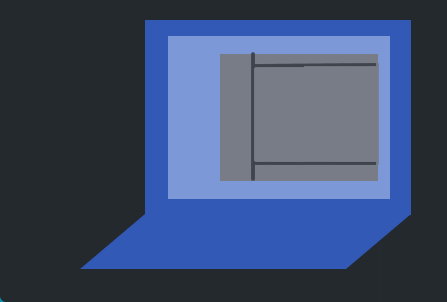

as before i'll probably be posting progress on this as it happens. but i can safely call it a start!
#ukagaka#english ukagaka#ukagaka ghost#original#artists on tumblr#oc#original character#ai oc#robot oc#aster#rigel (aster)#vega (aster)#CaelOS#aster ghost update
79 notes
·
View notes
Note
Cactus fascinates me, does it run on code similar to an existing instruction set or is it completely original on that front?
What can you do with it? What's it's storage?
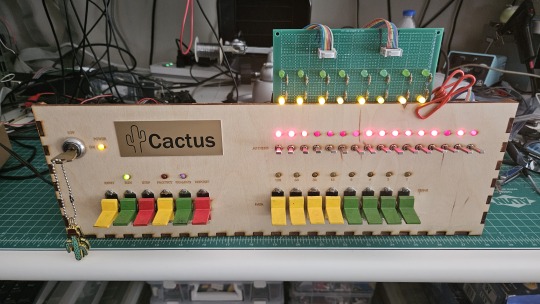
Both the Cactus (the original wooden prototype from years ago) and the new PCB Cactus(es) are essentially derived from a minimal 6502 computer design by Grant Searle for their core logic. Here's what that would look like on a breadboard:
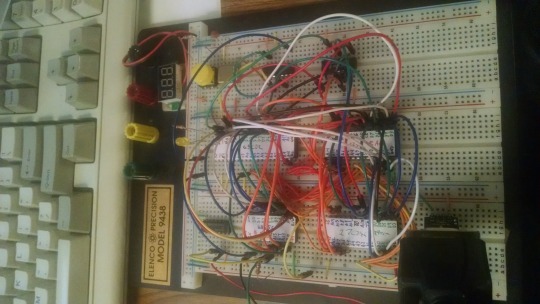
There isn't much to it, it's 32K of RAM, 16K of ROM containing Ohio Scientific's version of Microsoft BASIC, a 6850 ACIA for serial interaction, some logic gates, and of course a 6502 microprocessor (NMOS or CMOS, doesn't matter which). You hook it into a terminal and away you go.
Grant's design in turn can be best described as a distilled, modernized version of the OSI Challenger series of computers. Here's an OSI-400 and a Challenger 4P respectively:
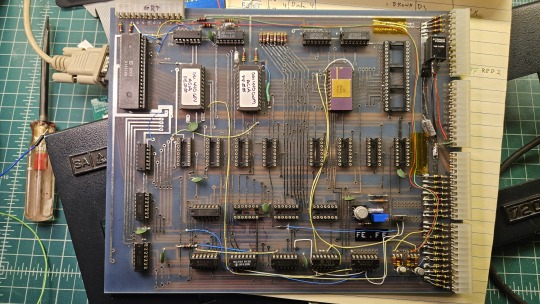

The left one is a replica of the 400 circa 1976, also called the Superboard. It was affordable, endlessly reconfigurable and hackable, but ultimately very limited in capabilities. No BASIC, minimal monitor ROM you talk to over serial, but you could connect it to a bus to augment its features and turn it into a more powerful computer.
Whereas the OSI C4P on the right from about 1979 has more RAM, a video card, keyboard, BASIC built in, serial interface, cassette tape storage, and that's just the standard configuration. There was more room to expand and augment it to your needs inside the chassis (alot changed in 3 years for home computer users).
Grant's minimal 6502 design running OSI BASIC is a good starter project for hobbyists. I learned about the 6502's memory map decoding from his design. I modified and implemented his design on a separate cards that could connect to a larger backplane.
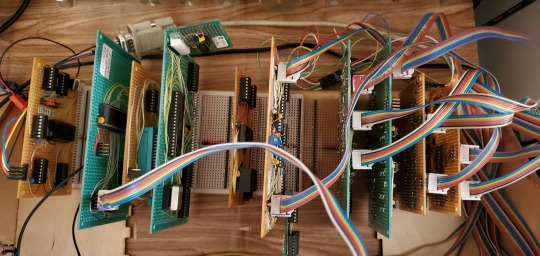
Here are the serial, ROM, RAM, and CPU cards respectively:
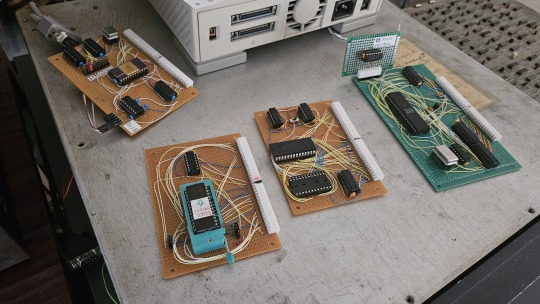
Each one is 100% custom, containing many modifications and fixes as I developed the design. However, that's only half of the computer.
I really wanted a 6502 machine with a front panel. People told me "nobody did that", or couldn't think of examples from the 1970s but that seemed really strange to me. Especially since I had evidence to the contrary in the form of the OSI-300:
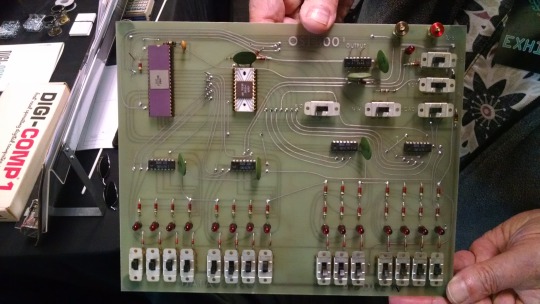
This one I saw at VCF West back in 2018 illustrates just how limited of a design it is. 128 bytes of RAM, no ROM, no serial -- just you, the CPU, and toggle switches and LEDs to learn the CPU. I was inspired the first time I saw one in 2015 at VCF East, which is probably when this whole project got set in motion.
Later that year I bought a kit for a miniature replica OSI-300 made by Christopher Bachman, and learned really quickly how limited the design philosophy for this particular front panel was. It was a major pain in the ass to use (to be clear, that's by OSI's choice, not any fault of Christopher in his implementation)

So... I designed my own. Took awhile, but that's the core of what the Cactus is: my attempt at experiencing the 1970s homebrew scene by building the computer I would have wanted at the time. Over half of the logic in the Cactus is just to run the front panel's state machine, so you can examine and modify the contents of memory without bothering the 6502. I added in all of the things I liked from more advanced front panels I had encountered, and designed it to my liking.
Here's the original front panel, accompanying logic, and backplane connected to the modern single board computer (SBC) version of the machine:
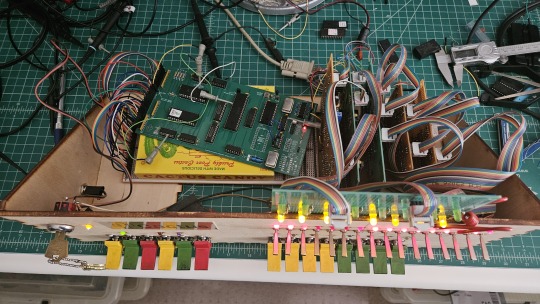
And here's the new Cactus SBC working with the new front panel PCB, which combines the logic, physical switch mountings, and cabling harnesses into a single printed circuit board.
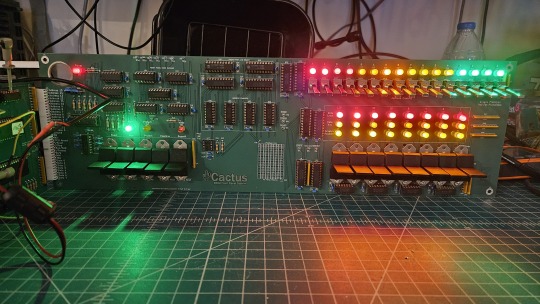
So, what can you do with it? Pretty much the same things I do already with other contemporary 1970s computers: play around in BASIC, fire up the occasional game, and tinker with it.
I've got no permanent storage designed for the Cactus as yet, it's been one of those "eventually" things. The good news is that a variety of software can be ported to the hardware without too much trouble for an experienced hobbyist. A friend of mine wrote a game called ZNEK in 6502 assembly which runs from a terminal:
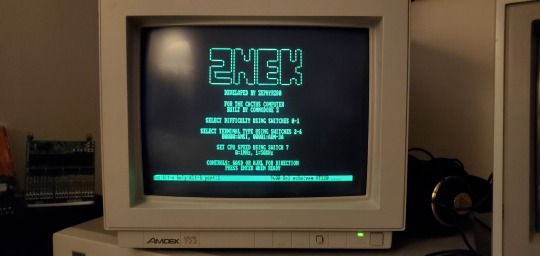
Right now, you have to either toggle in machine programs from the front panel from scratch, burn a custom ROM, or connect it to a serial terminal to gain access to its more advanced features:

Here's it booted into OSI BASIC, but I have also added in a modern descendant of Steve Wozniak's WOZMON software for when I need to do lower level debugging.
I've also got a video card now, based on the OSI-440. I have yet to implement a keyboard, or modify BASIC to use the video board instead of the serial connection. Even if I did, screen resolution is pretty limited at 24x24 characters on screen at once. Still, I'm working on that...
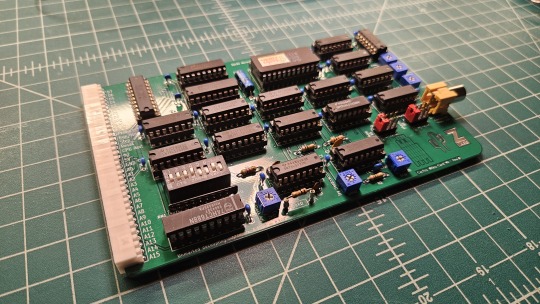

Anyway, I hope that answers your question. Check the tags below to see the whole process stretching back to 2017 if you're curious to learn more of the project's history. I'm also happy to answer any more questions you might have about the project.
267 notes
·
View notes